- Home
- Various Authors
International Speculative Fiction #5 Page 2
International Speculative Fiction #5 Read online
Page 2
Growing food crops was only possible at a certain altitude, in plantations reaching towards the sky to make the most of the weak solar heat: cassava, sweet corn, peppers, beans, squash, and potatoes could be harvested up to an altitude of 3,600 metres. Between 3,600 and 5,000 metres, only potatoes would grow. Beyond that every plant, even though modified by ancient biotechnology, stopped yielding any fruit.
According to local myths, the Ice Age had lasted for about 500 years, an exceptional phenomenon that had occurred at least twice more. Yet according to the same legends, when the climate stabilized again the tundra would recede and the parting waters would uncover fertile lands, and the Aeromancers would be able to come down from their heights; the heaths would flower again and their Solar Trees would prosper once more.
They had been waiting for this moment for centuries.
From the repaired chronicles of Saxayé.
Karia entered the med-lab pushing the gurney at speed.
“Dad, we found this girl. She was floating in the Ocean, almost dead.”
The stout shape of Iguain Celcantoss turned first towards his daughter and then towards Aruna. She had regained consciousness, but however hard she tried she still couldn’t make her talons clasp.
“An Aeromancer? And the rest of the flight? And what was she doing in the sea?”
Iguain picked up an oblong device from the work top and ran it over the girl’s body. He stopped at her shoulders, where the inflammation was visible.
“There wasn’t anybody else. She mentioned a Tower... and an island. She said she had to find them.”
The Doctor’s smooth face was rapt with concentration as he checked the readings. He turned to the Aeromancer. For centuries the inhabitants of Modified Earth had been using the oceanic language which had become the repository of idioms and dialects from before the Second Ecopoiesis.
“Can you hear me? What’s your name?”
She nodded her head, and tried to grab his arm. At the sight of her talons Iguain dodged out of the way and the young woman’s hand dropped. The bone structure of her arms was very elongated, especially near the hands where the metacarpals and phalanges were twice as long as those of an Aquamancer.
“My name is Aruna Dalkey, of the tribe of the Aeromancers of Kilimanjaro.” Iguains’s cutaneous crests suggested he was smiling. Though after a while Aruna realised that this was an almost fixed expression on his face. The feathers along her arms quivered.
“You are not going to die... you’re just very tired. How did you manage to get this far? We’re eleven days’ travel from the nearest coast.”
“Eight days... if you’re flying.”
He opened his eye membranes wide, exposing aquamarine irises. He was honestly surprised, as if Aruna had said something nonsensical. His surprise, though, owed as much to seeing an Aeromancer after such a long time; the floating bodies they sighted always ended up as food for the orcarks if the fire twisters didn’t reduce them to shreds first.
“I’ll give you a solution to drink that will make you feel better.”
Iguain offered her a container and Aruna drank the oily liquid. It was only then that she realized she was in a med-lab.
“Where am I? And who are you?”
“Welcome to Saxayé, the capital of the Aquamancers. My name is Iguain Celcantoss and this is my daughter Karia.”
“Saxayé? I’ve never heard of it... But thank you for all you have done. Now I must continue with my journey.”
When she tried to get up, the doctor stopped her.
“It’s too soon to fly. You need to rest...”
The doctor’s manner was thoughtful and considerate, and Aruna didn’t want to seem rude or discourteous.
“Let me go... before it’s too late. I have to find the Tower.”
“In your condition you wouldn’t be able to beat your arms for even a minute. I don’t want to keep you here against your will, but trust me, it’s better if you build up your strength before taking off again.”
As soon as he turned away to put his instruments on the work surface, Aruna could control herself no longer and burst into tears.
“You don’t understand... my people are dying. Only the Tower can save us.”
“Wait, calm down. Tell me about this Tower. Why are you looking for it? And why is it so important?”
Iguain Celcantoss handed Aruna a handkerchief. The Aquamancers, as far as airborne reconnaissance had shown, were peaceful people. Aruna needed to be able to trust someone. Anyway, Karia had saved her life and that had to be a good sign.
So the Aeromancer told them everything about the threat hanging over all of them, and hoped she wouldn’t live to regret it.
Mnemonic relic 3 (source uncertain)
At the beginning of the third Millennium, near the North Pole, on Spitsbergen, an island in the Svalbard archipelago, a building was erected that was known to the future generations as the Tower of Seeds.
Inside the Tower, thousands of samples of all the different varieties of seeds were stored in the hope that one day they would in this way be able to survive an accident or natural catastrophe.
Following the Second Ecopoiesis, the island sank beneath the Global Ocean and from then on no one heard any more about it. Despite this, the vault’s construction and the care taken over its security led many Aeromancers to believe that if they could find the Tower, they would still be able to use the seeds.
According to various mnemonic fragments, the Tower, powered by a thermopile, consisted of three rooms located at the top of a 125-metre-long tunnel. The seeds were kept at -20 degrees Celsius and sealed in specially designed containers made of four layers of aluminium. These containers were stored inside canisters and placed on the shelves in the vault.
The low temperature and humidity levels in the Tower would limit the metabolic activity of the seeds and maintain their integrity. Preserved correctly, some seeds could last for millennia.
From the repaired chronicles of Saxayé.
The meeting between Aruna and Iguain had unhoped-for consequences, the most important of which was their audience with the Council of Saxayé and its outcome.
The president, Yecené Urus, in his official uniform of a fluorescent overall with an opening on the back for his dorsal fin, had listened in silence to the words of the outsider, but he wasn’t convinced.
“If I have understood correctly, you are saying that the existence of the Global Ocean is under threat if we don’t find this Tower?”
Aruna was standing in front of the members of the assembly. Her plumage had regained all the vigour of her genetic line, and shone with a myriad of colours. She found Iguain’s presence by her side reassuring. The medic, for some reason, had believed her. In fact he seemed almost happy to be helping her.
His cutaneous crests were more tightly stretched than usual, frequently revealing his conical white teeth.
Together, Aruna and Iguain had spent hours and hours sifting through the available mnemonic relics, hunting for information about the location of the Tower.
The Aquamancers’ network was not extensive, and lots of scouts explored the submerged ruins to hook up to old databases.
The fact that she might be the only survivor of that year’s mission kept a faint flame of optimism alight in Aruna. She and her companions had left the Nest without knowing what to do, nor how to proceed if they succeeded in finding the Tower.
Their flight was more a test of faith than of hope.
“Yes, that’s right. The disappearance of humanity caused, amongst other consequences, the evaporation of the coolant reservoirs of about 870 nuclear power stations scattered around the world and the meltdown of their reactors. The clouds that continued to form for decades afterwards turned out to be more of a problem than the radioactive material. Five-hundred billion tons of methane deposits were released as the layers of ice in which they were trapped melted. All that gas accelerated global warming to levels that had been unheard of since the end of the Perm
ian period.”
“This data is known to us. There are no boundaries between the ecosystems. The ocean is no longer constrained by the limits imposed by the continents and it no longer has the divisions it used to have. The Global Ocean was the origin of everything that breathes and reproduces, and it seems that it is also their future. We see no threats on the horizon.”
The round head of president Urus nodded up and down. The members of the assembly approved.
“Permit me to disagree.”
Aruna turned from one side of the semicircle to the other. If the Tower really existed, and the Aquamancers could be convinced of the danger they were all in, maybe they would be able to help her.
“Have you ever left the sea? Have you ever analyzed the situation of the Risen Lands?”
Some members of the assembly gasped, others vented their air valves. Some, irritated, whispered to each other. Who did this outsider think she was to throw around accusations—how dare she seed doubt and fear amongst them about what the future might bring?
“The Risen Lands? Are you referring to the lands made hard by the Ice Age where you have made your nests?”
“Yes, before the Second Ecopoiesis, below the mountains, the lakes and the river deltas were suffocated by weeds and fertilizers. The green film on the surface of the stagnant waters transformed into tons of algae that could absorb so much oxygen from the water that anything swimming in it died instantly. Our ancestors witnessed everything from above. When the algae collapsed from lack of oxygen, their decomposition intensified the process. The lagoons, once crystal clear, became great expanses of sulphurous sludge; the river estuaries spread for hundreds of kilometres in unending dead zones. The plants and animals survived according to their tolerance to UV rays, or mutated beneath a bombardment of electromagnetic radiation.”
Aruna closed her eyes. Her beak beat the words out with force. The Aquamancers kept listening.
“When the worst happened, life went on. It went on regardless, even though the parameters had changed. We, the animate races, are the result. Now, though, the threat still hangs over us because there are no more trees left to defend us.”
“What have the trees got to do with the disappearance of the Ocean?”
“Like I said, our ancestors, on their first flights, saw everything from above. Their genetic memory preserved the record of those events in the chemical composition of our plumage. If you don’t believe my words, check the analyses against the fossils of the birds from the First Ecopoiesis.”
Aruna turned to Iguain who lifted a translucent plate.
They had come prepared, knowing that the Council would insist that they examine the matter in an entirely rational manner.
“All right, continue... we want to know about the trees.”
“The disappearance of the trees, together with heavy use of engineered seaweed to produce fuel hydrogen once the fossil fuels ran out, caused the Earth’s temperature to increase, and in consequence the level of the Ocean to rise. There is a limit beyond which the biosphere ceases to provide protection from the effects of these types of processes and starts to magnify them instead. The only way we can save the Earth is by replanting trees. The clouds will give us water once more, and the Sun will heat and produce vapour from the watery mass of the ocean. This is the only way the Global Ocean can be made to recede and the Risen Lands become fertile again. With the seeds from the Tower, we will have seasons again. Do you even know what seasons are?”
The Aquamancers remained unmoved, like when you listen to an explanation about the mysteries of the universe, and the sheer size of the phenomena exceeds your capacity to comprehend them. It was difficult to read their expressions
Aruna hoped she had managed to get the message across.
Mnemonic relic 4 (source: Wikipedia fragment)
The Maunder Minimum is the name given to the period that lasted from 1645 to 1715 of the First Ecopoiesis, when sunspots became an extremely rare occurrence. The phenomenon was named after the astronomer E.W. Maunder, who discovered the absence of solar flares and sunspots during that period by studying the news of the era. During the Maunder Minimum, astronomers recorded fifty sunspots instead of the more usual 40,000 or 50,000.
The beginning of the Maunder Minimum was abrupt, with no warning phenomena, though during the final phase, between 1700 and 1712, the sun’s activity gradually picked up again and began to increase.
The Maunder Minimum coincided with the coldest part of the so-called Little Ice Age, during which Europe and North America, and perhaps also the rest of the world (for which reliable data is not available), suffered particularly severe winters. Data from successive eras led scholars to hypothesize that during the Maunder Minimum the Sun might have expanded and its rate of rotation diminished.
From the repaired chronicles of Saxayé.
At dawn of the following day, a squad left Saxayé heading northeast towards the banks of Bioluminescent Plankton. Behind them the inflatable city looked like a 25-km-long boomerang.
The inhabited corals exploited special organisms to agglomerate cemented sand structures connecting the underwater archipelago with mobile bridges floating at varying heights.
The fish that swam around it all could see Saxayé steaming and gurgling amidst thousands of bubbles of CO2 in suspension.
Iguain had taken the place of young Coorny, while Tsai Chin had been moved down the squad’s formation to Karia’s side.
Aruna, unsuited to swimming, was transported in a capsule that was so narrow that to fit she had to fold her arms around her upper body.
Their destination was a point near the North Pole. According to the mnemonic relics, this was a plausible position for the location of the Tower.
Iguain had managed to convince the Council to grant him permission to accompany the outsider, verify the nature of the threat, and “take possession” of the seeds. The risk that the legend might be true, and that the consequences foreseen by the Aeromancers were a real possibility, had to be taken seriously. Still, Iguain was not sure what meaning to attribute to the expression “take possession.”
He had a plan too, but of a completely different kind.
In the past, he had heard rumours about the Tower, but that information, like many other things, had been forgotten, until Aruna’s story had brought it back and reactivated it.
Near Miami, the squad came across thousands of eels like silver ribbons, up to five metres long, swarming with graceful agility thanks to rudimentary fins and their pointed snouts.
When they dived into the deeps, they saw the trail of pilings that had once held up one of the human civilization’s motorways. Following these, they reached a merchant ship resting on the seabed and half buried in the sand, its corroded iron hulk feeding a prolific mass of multicoloured seaweed. All around the wrecked ship, amidst statues covered with anemones, spores, and starfish, spread a ten-centimetre-thick carpet of red seaweed.
They decided to set up their bubble and stop to rest.
Mnemonic relic 5 (source: Wikipedia fragment)
Whoever wants to access the seeds in the Tower must get past four doors: the entrance, a second door in the tunnel, and a further two airtight doors.
The keys are coded in such a way as to allow access to various levels of the structure, but not all the keys open all the doors.
Movement sensors are present all around the site.
A work of art makes the vault visible from many kilometres away. The roof and entrance are covered with highly reflective mirrors and prisms designed by the artist Dyveke Sanne. This installation acts as a signal by reflecting the polar light in the summer months, whereas in the winter a network of 200 fibre optic cables illuminate the site with light that ranges from turquoise-green to white.
From the repaired chronicles of Saxayé.
On the third day of their journey, while they were eating their evening meal, a mixture of crustaceans and mollusks in a sauce of coral mucus, Tsai Chin lifted his head from hi
s bowl.
The coral formations in which they were camped had cracked the road’s surface and invaded the surrounding buildings. The streets had been engulfed by a covering of bright green moss.
“Can you hear that too?”
They all turned to face the rocks. At the top, the outline of the crumbling skyscrapers stood out, with manta rays as big as ancient aeroplanes flying between them.
Aruna’s hearing caught no sound vibrations, but the Aquamancers ground their teeth. Then Aruna jumped—she, too, could now hear the low, repeated laments. The sounds that at first had seemed mournful, after a little changed in their intensity, and became grunts, punctuated here and there with whistles and murmurs.
Focusing, Aruna could make out a pair of Megawhales passing by a few kilometres away. She guessed that the one in front was the female with the male following behind, performing complex sound modulations in his courtship of the female.
“They’re going north. We’d better hurry up...” Karia said, and Iguain started to gather up their things.
“How can you tell?”
Aruna turned to the young woman, who was helping her father while Tsai Chin listened, rapt, to the hypnotic frequencies of the Megawhale’s song.
“I recognize the song. It reaches 68 Hz. The songs of the Megawhales are different depending on where they come from. Look at them—they are the largest beings on earth.”
“No, they’re not... you should see the Giant Sequoias, they can grow to be taller than a hundred metres and weigh up to 200 tonnes.”
Iguain opened his eye membranes wide, and stared at Aruna.
“There are Giant Sequoias on the Risen Lands?”
“They were crossbred and made resistant to the climate. We have three on Kilimanjaro.”
The Aquamancers settled Aruna into the capsule and stowed their air bubble. Tsai Chin took out some slender ropes and started using sign language.

 Lady Ambleforth's Afternoon Adventure by Ann Lethbridge, Barbara Monajem, Annie Burrows, Elaine Golden, Julia Justiss and Louise Allen
Lady Ambleforth's Afternoon Adventure by Ann Lethbridge, Barbara Monajem, Annie Burrows, Elaine Golden, Julia Justiss and Louise Allen Gods & Mortals
Gods & Mortals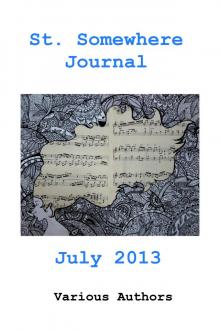 St. Somewhere Journal, July 2013
St. Somewhere Journal, July 2013 firstwriter.com First Short Story Anthology
firstwriter.com First Short Story Anthology Warcry: The Anthology
Warcry: The Anthology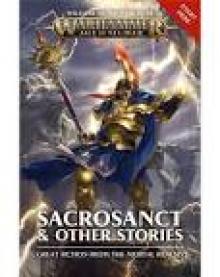 Sacrosanct & Other Stories
Sacrosanct & Other Stories Ultimate Heroes Collection
Ultimate Heroes Collection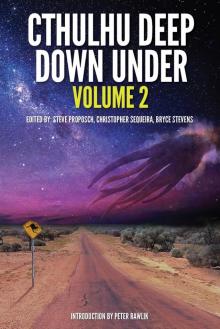 Cthulhu Deep Down Under Volume 2
Cthulhu Deep Down Under Volume 2 Erotic Classics II
Erotic Classics II Dynasties: The Elliotts, Books 1-6
Dynasties: The Elliotts, Books 1-6 Dynasties:The Elliots, Books 7-12
Dynasties:The Elliots, Books 7-12 International Speculative Fiction #4
International Speculative Fiction #4 Fyreslayers
Fyreslayers One Night In Collection
One Night In Collection Mortal Crimes 2
Mortal Crimes 2 Some of the Best from Tor.com
Some of the Best from Tor.com Howl & Growl: A Paranormal Romance Boxed Set
Howl & Growl: A Paranormal Romance Boxed Set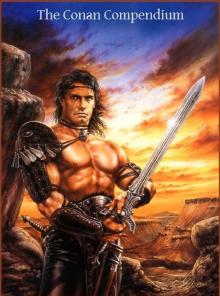 The Conan Compendium
The Conan Compendium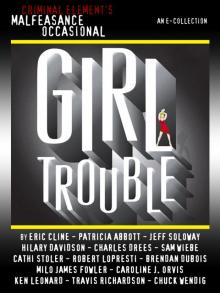 The Malfeasance Occasional
The Malfeasance Occasional Brides of Penhally Bay - Vol 4
Brides of Penhally Bay - Vol 4 Brides of Penhally Bay - Vol 2
Brides of Penhally Bay - Vol 2 Brides of Penhally Bay - Vol 1
Brides of Penhally Bay - Vol 1 School's in Session
School's in Session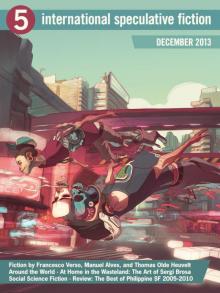 International Speculative Fiction #5
International Speculative Fiction #5 Erotic Classics I
Erotic Classics I Legends: Stories in Honor of David Gemmell
Legends: Stories in Honor of David Gemmell Mortal Crimes 1
Mortal Crimes 1 The Classic Children's Literature Collection: 39 Classic Novels
The Classic Children's Literature Collection: 39 Classic Novels Don't Read in the Closet volume one
Don't Read in the Closet volume one Some of the Best from Tor.com: 2014: A Tor.Com Original
Some of the Best from Tor.com: 2014: A Tor.Com Original The Fitzwarren Inheritance
The Fitzwarren Inheritance All Things Zombie: Chronology of the Apocalypse
All Things Zombie: Chronology of the Apocalypse Hammer and Bolter - Issue 12
Hammer and Bolter - Issue 12 Kiss Kiss
Kiss Kiss Dog Stories
Dog Stories Bad Blood Collection
Bad Blood Collection